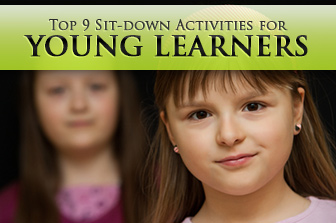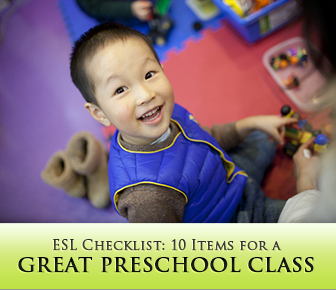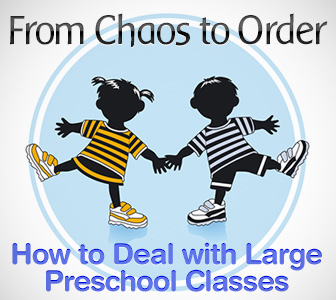Ah, young learners just love to move.
They’re not as self-conscious as teens are – not afraid to look silly as adults are. They’ll dance, race and jump with gusto, relishing in the sheer energy that is coursing through their veins. But what happens when we have no room to jump and dance? What happens when there are simply too many students and no space left to play? What if you are told to keep the noise level down and can’t have as many high-energy activities as you’d like? There is no need to despair; there are several sit-down activities that young learners will enjoy just as much.

9 Best Sit-down Activities for Young Learners
-
1
Whiteboard Games
There are plenty of whiteboard games students can play from the comfort of their own seats, including Pictionary, Tic Tac Toe and Hangman.
-
2
Storytelling
Children love to be told a good story. If you have enough room, get the children to sit in a circle on the floor. Use big, bright storybooks with lots of pictures. Ask them questions as you go along – pause…what do you think will happen next? Get them involved in the story, and they’ll enjoy it a lot more. And don’t forget to make faces and use different voices!
-
3
You’re the Teacher!
Show students a series of flashcards and practice the same kind of question: what’s this?; what color is this?; etc… Students take turns standing in the front of the class and being the teacher. They must ask their classmates the same question. The element of repetition helps boost retention.
-
4
Crafts
Crafts and art work are great, quiet sit-down activities that don’t always have to be as dull as having them sit working in silence. Give them each a set of materials they must arrange and glue on a sheet of paper by listening carefully to your instructions. For instance, give them each one red square, one green triangle, one brown rectangle, one green circle, and a smaller brown rectangle. Give them these instructions: Put the red square at the center. Put the green triangle above the red square. And so on till they complete a picture of a house and tree.
-
5
Coloring and Drawing
Similar to the activity above, you can give your class a picture to color but give them specific instructions: color the hair brown; draw a blue square and draw a green circle in the square. These are great exercises in paying attention, listening carefully and following instructions.
-
6
Guessing Games
You can play this game by having students sit in a circle on the floor or at their own desks. Place an item in a bag that is not see through – it can be any real object or toy. Walk around and students take turns putting their hands in the bag to feel the object. They must guess what it is. You can also hold a flashcard towards you and describe what you’re seeing to have students guess. Guessing games are great for keeping students engaged – and keeping them sitting quietly.
-
7
Actions – Sitting Down
Who says they can’t do some actions while sitting down? There are plenty of songs you can sing while students move their arms and hands. They can chant and clap. They can even stomp their feet. If you have limited space for movement around the classroom, see what they can move while sitting at their seats.
-
8
Board Games
Whether you have a small group or a large group of students you have to divide into smaller groups, board games are the ideal sit-down activity. Have them sit together on the floor or push their desks together. Give each group a copy of the same game or different games – they can then switch! Use this template for Snakes and Ladders and adapt it to suit your needs – review vocabulary or a particular grammar point.
-
9
Pass the Ball!
And who says you can’t play with a ball while sitting? If students are sitting at their desks, they can simply hand it over to another student. If they’re sitting on the floor in a circle, they can toss it to each other. Play spelling games, Q & A games, count or say the letters of the alphabet.
Sit-down activities can be your best allies when you need to take a breather or give your young learners some time to relax and settle down. They don’t have to be boring – you can make them as much fun as any race or TPR activity.
If you have to teach a large group of young learners in a classroom that is not big enough for activities with movement, I strongly suggest taking them outside, if possible, as often as you can (maybe a couple of times a month) or perhaps to the school gym, cafeteria, or any large space where they can be more active. It’ll be a change of pace and your students will definitely appreciate it.
Can you think of any other great sit-down activities?
Other than worksheets, of course! They will always save the day!


